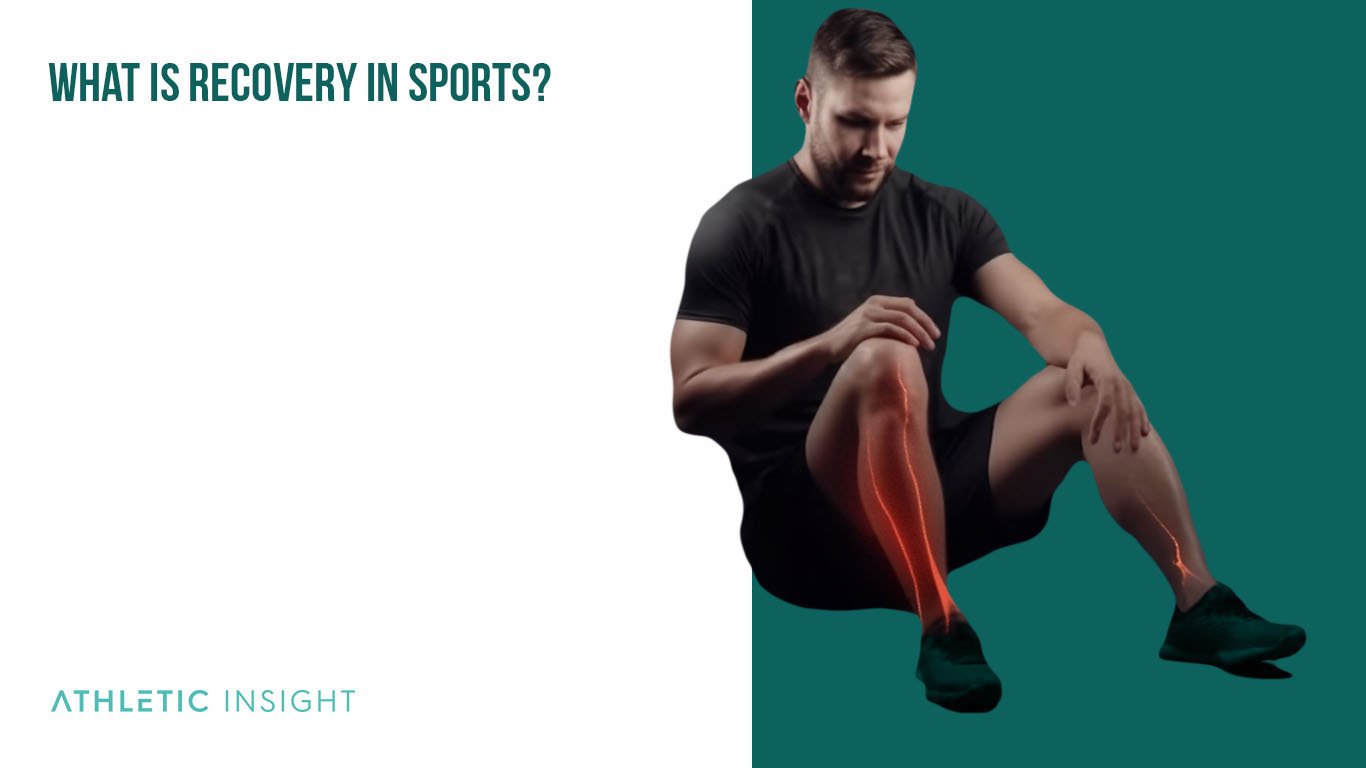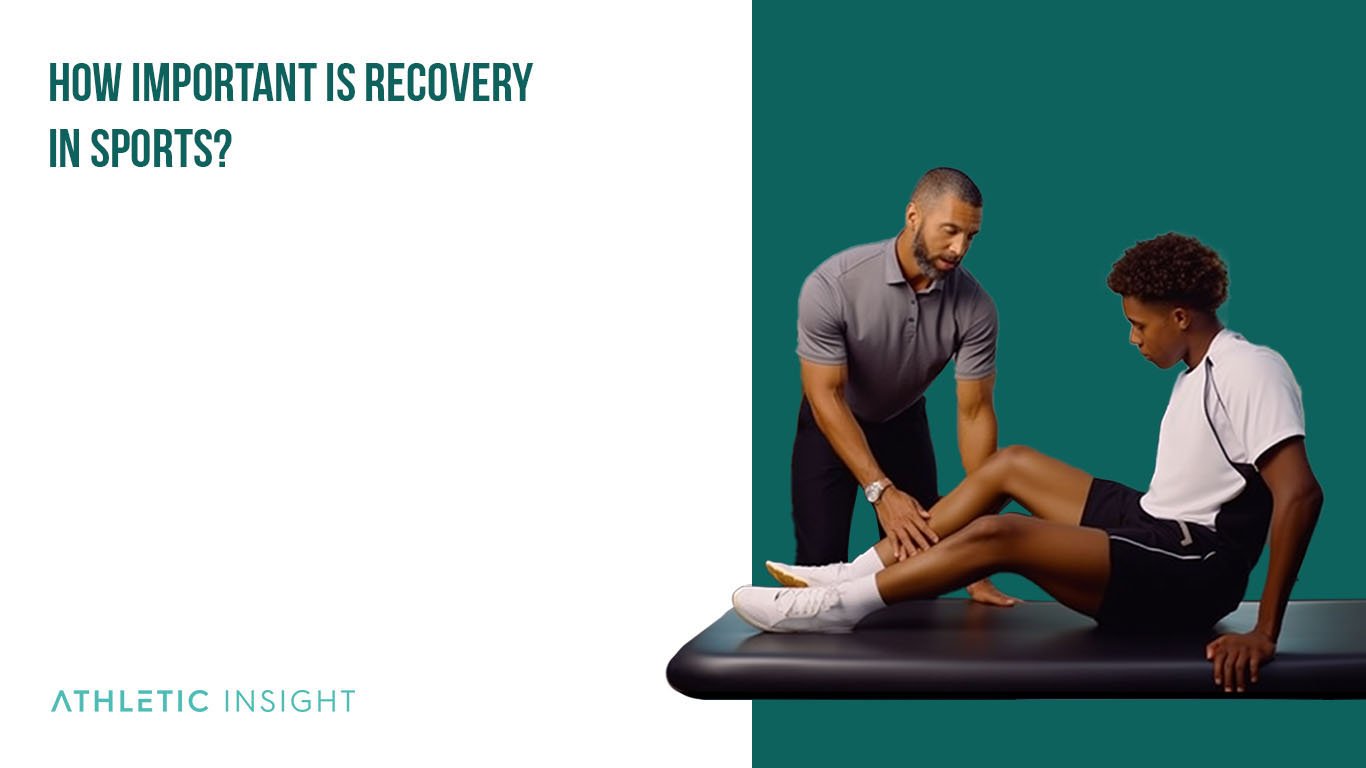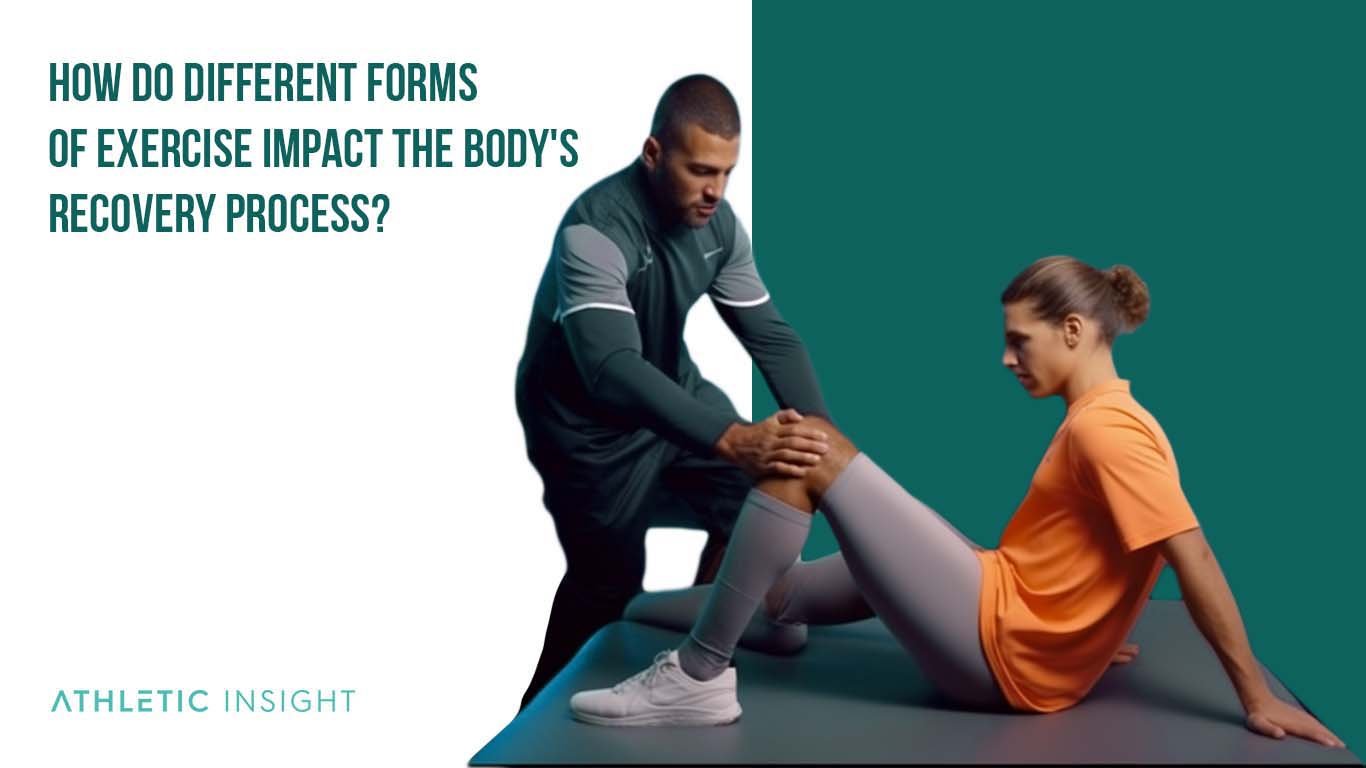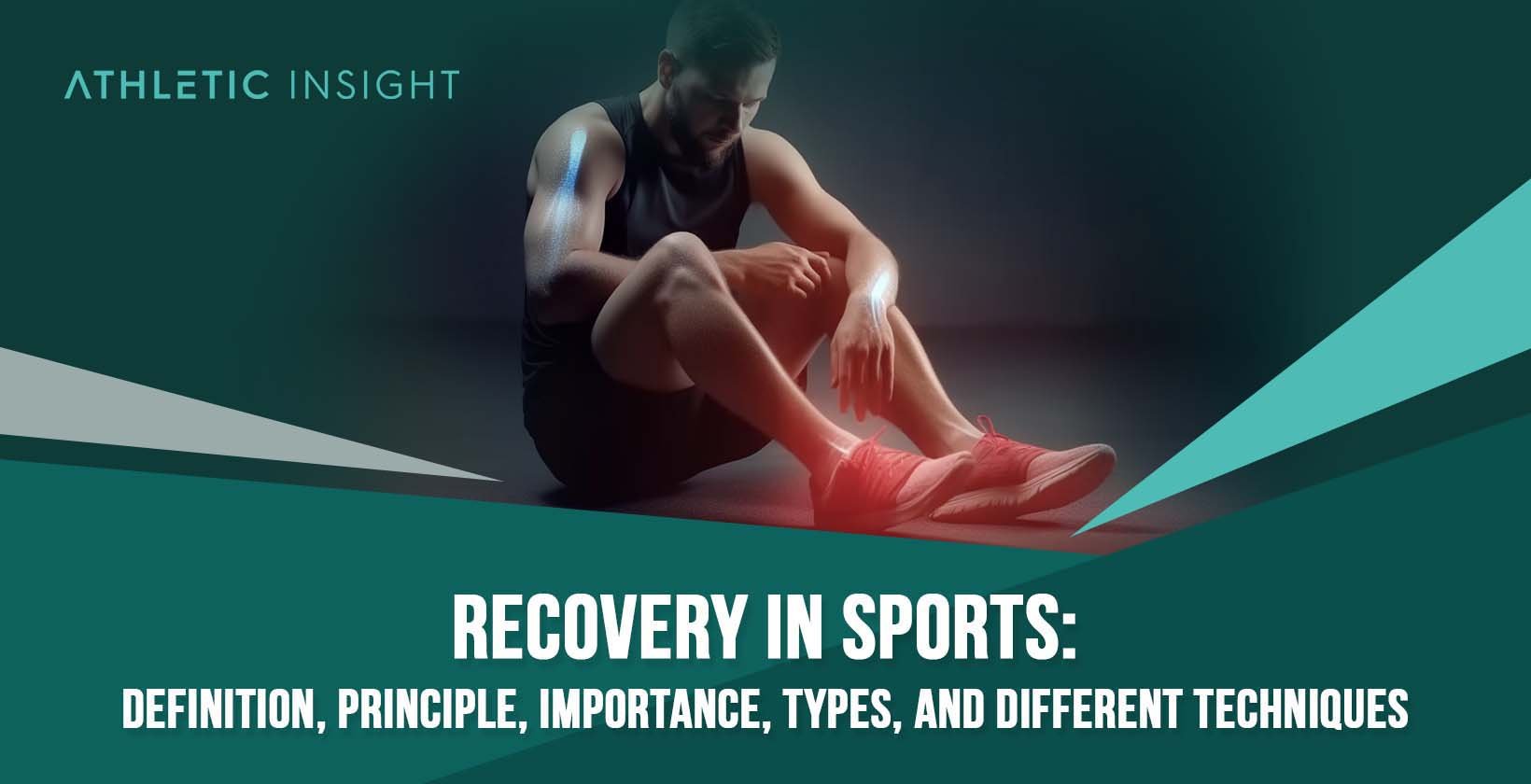In the world of sports, an athlete’s ability to recover from intense physical activity plays a critical role in optimizing performance and preventing injury. This article delves into the concept of recovery in sports, its underlying principles, importance, types, and various techniques employed by athletes to achieve optimal recovery.
What is Recovery in Sports?
Recovery in sports refers to the physiological and psychological processes that help an athlete restore their body and mind to pre-exercise states after intense physical activity. These processes aid in repairing tissue damage, replenishing energy stores, and reducing fatigue, ultimately facilitating enhanced performance and injury prevention.

What is the principle of Recovery in Sports?
The principle of recovery in sports emphasizes the importance of adequate rest and recuperation for athletes to restore their physical and mental capacities after intense training or competition. This principle recognizes that optimal performance and long-term health depend on the body’s ability to recover from stress imposed by physical activity.
How important is Recovery in Sports?
Recovery is of paramount importance in sports, as it directly impacts an athlete’s performance, injury risk, and overall well-being. A well-structured recovery regimen enables athletes to maintain consistent performance, avoid overtraining, and reduce the likelihood of injuries, thus contributing to a successful and sustainable sports career.

Why is Recovery important in Sports?
Recovery is crucial in sports for several reasons. It allows the body to repair damaged tissues, replenish energy stores, reduce fatigue, and restore hormonal balance. Additionally, proper recovery supports mental recuperation, enhances skill development, and fosters long-term health and well-being.
What is the purpose of Sports Recovery?
The primary purpose of sports recovery is to facilitate the restoration of an athlete’s physical and mental capacities to pre-exercise states, enabling them to continue training and competing at optimal levels. Recovery also aims to minimize the risk of overtraining, injuries, and burnout, thus promoting long-term success in sports.
What are the Types of Recovery in Sports?
There are three main types of recovery in sports: active recovery, passive recovery, and long-term recovery.
- Active Recovery
- Passive Recovery
- Long Term Recovery
1. Active Recovery
Active recovery involves engaging in low-intensity exercise or movement that promotes blood flow and aids in the removal of metabolic waste products. This form of recovery is beneficial for reducing muscle soreness, improving flexibility, and restoring energy balance. Examples of active recovery include light jogging, swimming, and yoga.
2. Passive Recovery
Passive recovery entails complete rest or inactivity, allowing the body to recuperate naturally without any additional physical stress. This type of recovery is essential for tissue repair, immune system support, and mental rejuvenation. Examples of passive recovery include sleep, relaxation, and meditation.
3. Long Term Recovery
Long-term recovery refers to scheduled periods of reduced training volume or complete rest, typically incorporated into an athlete’s training program to prevent overtraining and burnout. These periods, often referred to as “deload” or “taper” weeks, help athletes adapt to training stress and achieve peak performance during competition. Examples include off-season breaks and rest days within training cycles.
What are different Techniques for Recovery?
Some popular recovery techniques employed by athletes include foam rolling, massage, compression garments, cold water immersion, and sleep optimization. While the techniques for recovery are endless, the majority can be boiled down to supplementation, sleep/rest, cold and heat therapy.
What are the 4Rs in Sports Recovery?
The 4Rs of sports recovery include Rest, Repair, Rehydrate, and Refuel. These essential components provide a comprehensive framework for athletes to optimize their recovery process.
- Rest
- Repair
- Rehydrate
- Refuel
1. Rest
Rest is a vital component of sports recovery, as it allows the body to heal and rejuvenate itself. Adequate sleep and relaxation are crucial for supporting tissue repair, hormonal balance, and immune function. In addition, rest helps athletes maintain mental focus, mood stability, and overall well-being.
2. Repair
Repair refers to the process of tissue regeneration and remodeling following physical activity. This aspect of recovery involves protein synthesis, inflammation control, and removal of damaged cellular components. Proper nutrition, hydration, and restorative practices such as massage or foam rolling can aid in the repair process.
3. Rehydrate
Rehydration is the process of replenishing fluid levels in the body, which can be significantly depleted during intense physical activity. Adequate hydration is essential for maintaining blood volume, nutrient transport, and temperature regulation. Athletes should consume water and electrolytes to replace lost fluids and support optimal recovery.
4. Refuel
Refueling involves consuming nutrients to replenish energy stores and provide the building blocks for tissue repair. After exercise, athletes should consume a balanced meal consisting of carbohydrates, proteins, and fats to facilitate optimal recovery. Carbohydrates restore glycogen levels, proteins support muscle repair, and fats help regulate inflammation.
How do different forms of exercise impact the body’s Recovery process?
Different forms of exercise impose varying levels of stress on the body, affecting the recovery process accordingly. High-intensity, long-duration, or eccentric exercises can result in greater muscle damage, inflammation, and energy depletion, necessitating longer recovery periods. Conversely, low-intensity, short-duration, or concentric exercises generally require less recovery time due to reduced physiological stress.

What influence do psychological factors play in an athlete’s Recovery process?
All psychological factors significantly influence an athlete’s recovery process, as mental stress can exacerbate physiological responses to exercise and impede recovery. Anxiety, depression, and emotional stress can impair immune function, disrupt hormonal balance, and prolong tissue repair. Incorporating stress management techniques, such as mindfulness and relaxation, can enhance the recovery process and improve overall well-being.
What are some of the most popular myths about sports Recovery?
Some popular myths about sports recovery include the belief that stretching always prevents injuries, “no pain, no gain” mentality, and the idea that athletes should always consume protein immediately post-exercise. Understanding the nuances of recovery and adopting evidence-based practices are essential for optimizing recovery and performance.
Does Recovery in Sports improve Sports Performance?
Yes, recovery in sports plays a critical role in improving sports performance. Adequate recovery allows athletes to maintain consistent performance levels, enhance skill development, and reduce the risk of injury. By facilitating tissue repair, energy replenishment, and mental rejuvenation, recovery supports an athlete’s ability to perform at their best.
Can poor Recovery habits increase an athlete’s risk of injury?
Yes, poor recovery habits can increase an athlete’s risk of injury. Insufficient recovery can lead to chronic fatigue, impaired immune function, and hormonal imbalances, which can compromise an athlete’s ability to adapt to training stress and heighten injury risk. Prioritizing proper recovery practices is essential for maintaining optimal health and preventing injury.
Can Rest alone be enough to promote full Recovery after intense physical activity?
No, rest alone is not always sufficient to promote full recovery after intense physical activity. While rest is a crucial component of recovery, other factors such as nutrition, hydration, and targeted recovery techniques play essential roles in facilitating optimal recuperation. Athletes should adopt a comprehensive approach to recovery, encompassing rest, nutrition, hydration, and other recovery practices to ensure complete restoration of their physical and mental capacities.
Is it necessary to consume Protein after exercise to promote muscle Recovery?
Yes, consuming protein after exercise is important for promoting muscle recovery. Protein provides the necessary amino acids for muscle protein synthesis, which is the process of repairing and rebuilding damaged muscle fibers. Post-exercise protein consumption can enhance muscle recovery, support muscle growth, and reduce muscle soreness. However, it is crucial to note that the timing, amount, and type of protein may vary depending on an individual’s needs, goals, and the nature of their exercise regimen.



